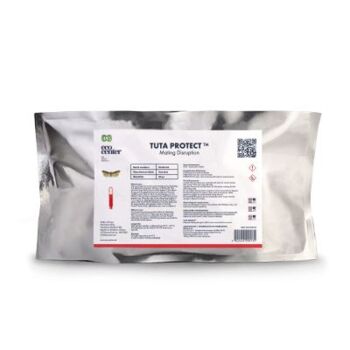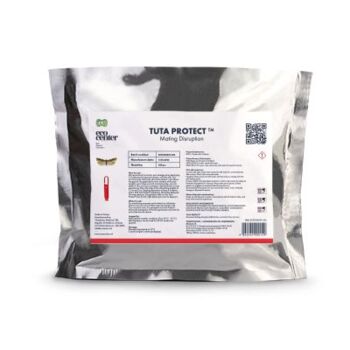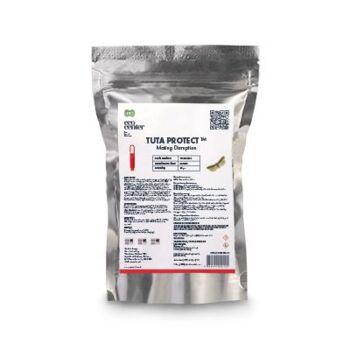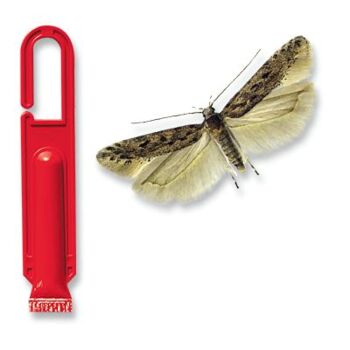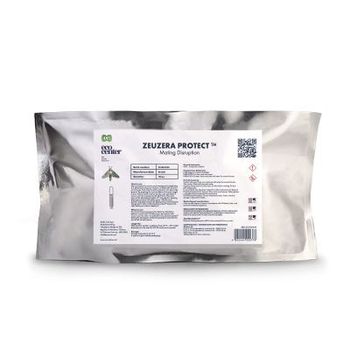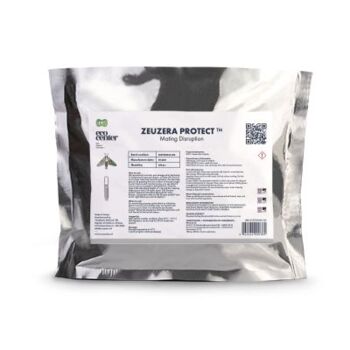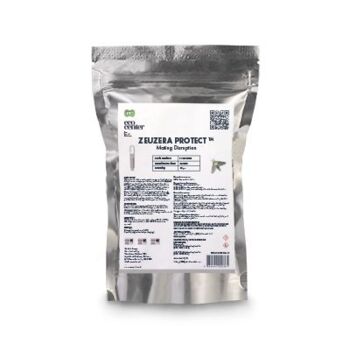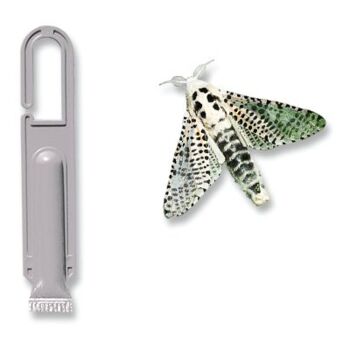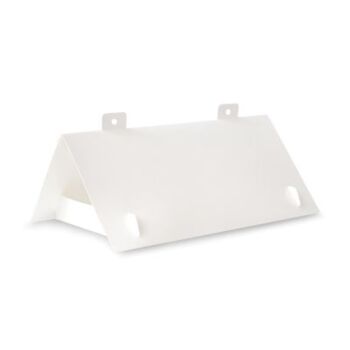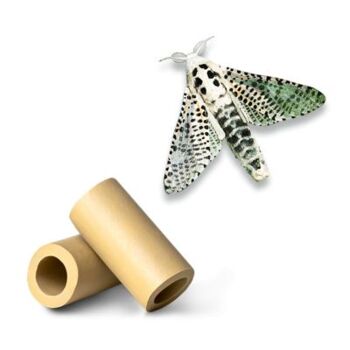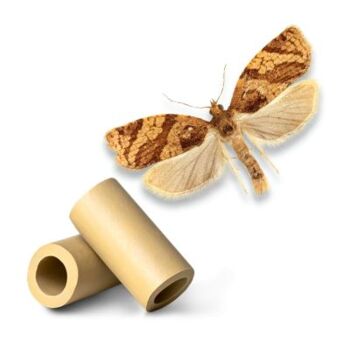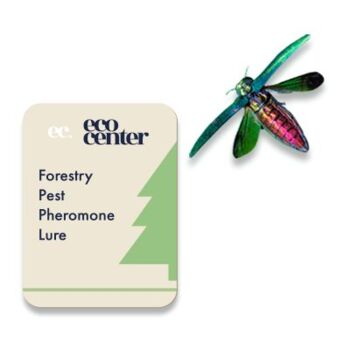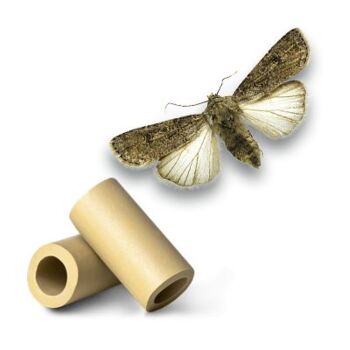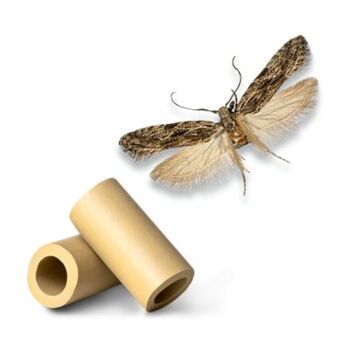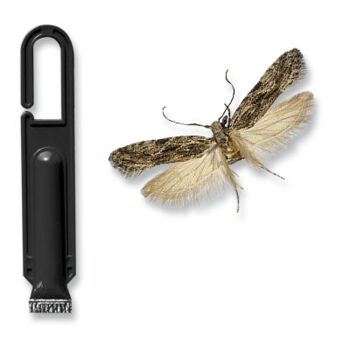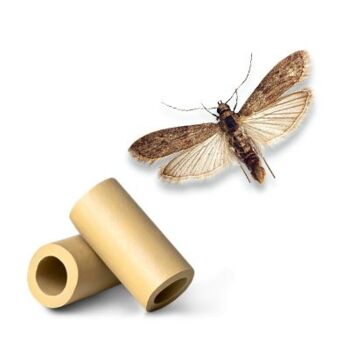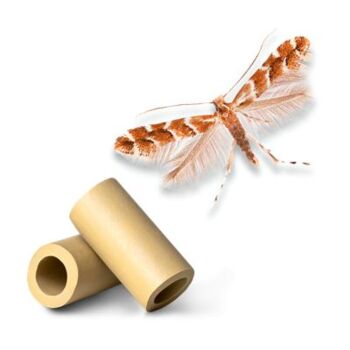Tuta Protect®
Tuta Protect® plant protection product against (Tuta absoluta) tomato leafminer. Mating disruption is a tool that involves the overstimulation of Tuta absoluta male pests with deployment of pheromones via Tuta Protect® dispensers, causing males to follow “false pheromone trails”, therefore interfering with mate finding behaviour.
Zeuzera Protect®
Zeuzera Protect® plant protection product against (Zeuzera pyrina) leopard moth. Mating disruption is a tool that involves the overstimulation of Zeuzera pyrina male pests with deployment of pheromones via Zeuzera Protect® dispensers, causing males to follow “false pheromone trails”, therefore interfering with mate finding behaviour.
Adoxophyes orana lures
Adoxophyes orana lure is a component of an insect trapping device, that uses pheromones to lure summer fruit tortrix into a trap.
The lure, in the form of the rubber dispenser, that contains female pheromone of summer fruit tortrix, must be placed in a Delta Plastic Trap to be fully functional (traps can be bought separately or in kits with lures).
Using such pheromone lures is an economic, environmentally sound approach to either monitor or trap these pests.
The lures in the traps must be replaced every 4-6 weeks to keep attraction rates high.
Shelf life - up to 2 years (optimum conditions).
Agrilus planipennis lures
Agrilus planipennis lure is a component of an insect trapping device, that uses pheromones to lure emerald ash borer into a trap.
The lure, in the form of the cellulose dispenser, that contains pheromone of emerald ash borer, must be placed in a EC Forest trap to be fully functional (traps can be bought separately or in kits with lures).
Using such pheromone lures is an economic, environmentally sound approach to either monitor or trap these pests.
The lures in the traps must be replaced every 8-10 weeks to keep attraction rates high.
Shelf life - up to 2 years (optimum conditions).
Agrotis segetum lures
Agrotis segetum lure is a component of an insect trapping device, that uses pheromones to lure turnip moths into a trap.
The lure, in the form of the rubber dispenser, that contains female pheromone of turnip moths, must be placed in a Delta Plastic Trap to be fully functional (traps can be bought separately or in kits with lures).
Using such pheromone lures is an economic, environmentally sound approach to either monitor or trap these pests.
The lures in the traps must be replaced every 4-6 weeks to keep attraction rates high.
Shelf life - up to 2 years (optimum conditions).
Anarsia lineatella lures
Anarsia lineatella lure is a component of an insect trapping device, that uses pheromones to lure peach twig borer into a trap.
The lure, in the form of the rubber dispenser, that contains female pheromone of peach twig borer, must be placed in a Delta Plastic Trap to be fully functional (traps can be bought separately or in kits with lures).
Using such pheromone lures is an economic, environmentally sound approach to either monitor or trap these pests.
The lures in the traps must be replaced every 4-6 weeks to keep attraction rates high.
Shelf life - up to 2 years (optimum conditions).
Cadra cautella lures
Cadra cautella lure is a component of an insect trapping device, that uses pheromones to lure tropical warehouse moth into a trap.
The lure, in the form of the rubber dispenser, that contains female pheromone of tropical warehouse moth, must be placed in a Delta Plastic Trap to be fully functional (traps can be bought separately or in kits with lures).
Using such pheromone lures is an economic, environmentally sound approach to either monitor or trap these pests.
The lures in the traps must be replaced every 4-6 weeks to keep attraction rates high.
Shelf life - up to 2 years (optimum conditions).
Cameraria ohridella lures
Cameraria ohridella lure is a component of an insect trapping device, that uses pheromones to lure horse-chestnut leaf miner into a trap.
The lure, in the form of the rubber dispenser, that contains female pheromone of horse-chestnut leaf miner, must be placed in a Delta Plastic Trap to be fully functional (traps can be bought separately or in kits with lures).
Using such pheromone lures is an economic, environmentally sound approach to either monitor or trap these pests.
The lures in the traps must be replaced every 4-6 weeks to keep attraction rates high.
Shelf life - up to 2 years (optimum conditions).

